Updated: 21-Oct-2020
Hermann Oberth was a pioneer of European rocketry. He was born in Transylvania, in the city of Sibiu, in 1894. He died in Germany in 1989.
-After his training as a physicist and the publication of "Rockets to Interplanetary Space" in 1923, together with the Russian Tsiolkowsky and the American Goddard, he was considered a pioneer of astronautics.

“Hermann Oberth”
-Precisely having written that book inspired Mrs. Thea Von Harbou, then Fritz Lang's wife, the script for the film “Frau im Mond” (Woman in the Moon).
-This UFA film can now be found on the Internet and in this movie it can be seen that in 1929 they discussed details that are currently reality, thanks to Oberth's advice.
-But its importance comes from when Oberth met with a student of his, Von Braun (see) to build the first liquid fuel rocket.
-He already had the collaboration of Rudolf Nebel as well.
-Oberth's first engine was the “Kegeldüse”.
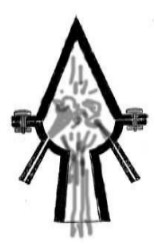
“The Kegeldüse”
-This engine used methane gas, C-H4. Later he made another one with liquid oxygen and carbon rods for fuel.
-In the group, Nebel, who was the most active, presents his Mirak. Political changes in the 1930's implicated them in the Magdenburg project, designing increasingly larger rockets and some failures.
-The truth is that he was especially dedicated to WASAG's anti-aircraft rockets (see), during WWII.
-At the end of the war he moved near Nuremberg and in 1948 he went to Switzerland. He worked in Italy between 1950-53.
-From 1955 to 1958 he was in the US where Von Braun had also gone. Together they were on the V-2 project.
-In 1961 he collaborated with Convair on the Atlas rocket project, and he retired at the age of 68 in 1962.
From Appendix 6: Below we show a work done by Hermann Oberth, more advanced than that shown in the main text.
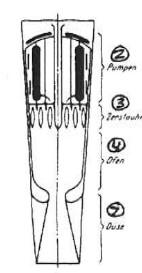
“Oberth's Small Rocket Engine”
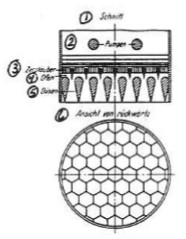
"Another section in the injectors area"
-The top drawing belongs to a small engine and the bottom one is a cross-section of a larger engine.
-The legends refer to: 1, section of the major. 2, pumps. 3, injectors. 4, chambers. 5, nozzles. 6, rear view. 7, nozzle.
-We now have an illustration of a two-stage rocket due to Oberth.
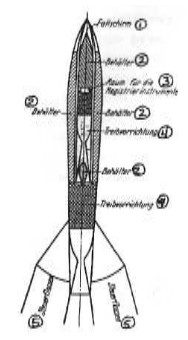
"Two-stage rocket by Oberth"
-In the upper part it has a parachute 1, the first tank 2 and just below the registration instruments 3.
-The first engine of the upper stage is 4 consuming hydrogen-LOX.
-Below that follow the tanks and the engine of the first stage, this one running on alcohol and LOX.
-The directional fins are marked 5.
-The total height of the rocket is 5 meters with a diameter of 56 cm. As a curiosity, it was launched from an airship that was already at an altitude of 5,500 meters.
From Appendix 7: Professor Oberth had already designed several rockets in the early 1930's.

"The Oberth Model B"
-As we can see, the "payload" is in the bow and at its vertex there is a recovery parachute.
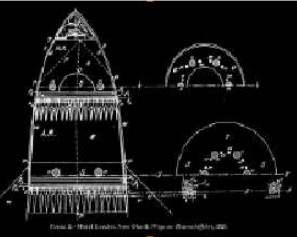
"Model E, various sections"
From Appendix 9: Experimental Design of a Rocket Engine by Hermann Oberth located in an old publication.
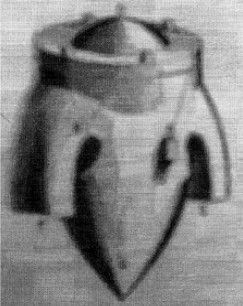
"Original engine design by Oberth"
From Appendix 10: Hermann von Oberth was the inventor of several experimental rocket engines.
-Here we see him in person with an engine whose schematic already appears in the main text.
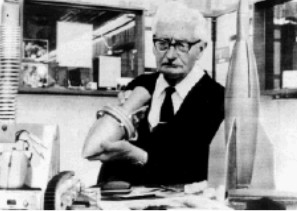
"Oberth in his -possible- laboratory"
Engines of OBERTH
Model: Kegelduse
Arquitecture:
Chambers:
Fuels:
Feed System:
Ignition:
Thrust:
Weight:

"The Kegeldüse"
Model: Rocket engines
Arquitecture:
Chambers:
Fuels:
Feed System:
Ignition:
Thrust:
Weight:


